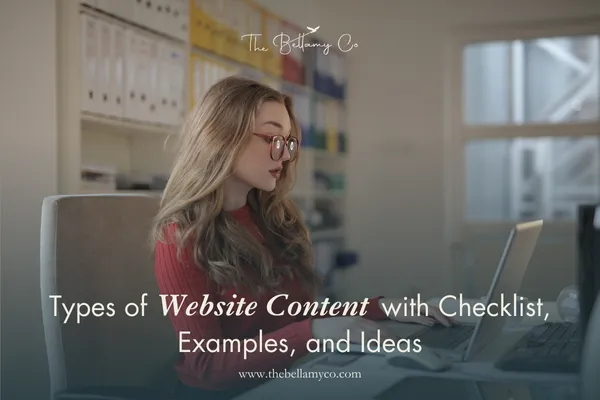
Boost Digital Presence With Onsite & Offsite SEO Strategies
How To Boost Your Digital Presence With Onsite and Offsite SEO Strategies
When done right, search engine optimization (SEO) lays the foundation for success on any platform. Yet, the very mention of SEO often sends shivers down spines, thanks to its reputation for being complex and constantly evolving with algorithm changes. This leaves many businesses, especially digital marketing newbies, hesitant or overwhelmed by the tasks involved.
But don’t worry—we’re here to demystify SEO! By focusing on the essentials of onsite and offsite SEO, you can build a solid strategy that simplifies the process. With the right tools and knowledge, you can confidently hit publish and watch your website thrive.

What is website SEO?
Website SEO is optimizing your pages to rank higher on the search engine results page (SERP). The most used search engine is Google, with 89.33% of users worldwide. Each search engine has its own set of rules, and when followed, it improves your site’s visibility, drives traffic, and grows your online presence. A strong SEO approach balances the two key components: onsite and offsite SEO.
Onsite SEO
Onsite SEO refers to the elements you can control directly on your website. This includes content keywords, improving site structure, enhancing page speed, and ensuring mobile-friendliness. Onsite SEO ensures your website is user-friendly and aligned with search engine algorithms.
Offsite SEO
Offsite SEO involves actions outside your website to boost authority and credibility. This includes building quality backlinks, engaging on social media, and using influencer and affiliate partnerships. Offsite SEO signals to search engines that your website is trustworthy and valuable, helping to improve rankings.

Types of onsite SEO (a.k.a on-page SEO) strategies
What is onsite website SEO? It is also known as on-page SEO, which focuses on the elements within your website. Fine-tuning these elements improves your visibility, user experience, and organic traffic. Here are the key onsite SEO strategies to help your website shine:
1. Keyword optimization
Keywords or key phrases are two or more words covering a topic you specialize in or want to rank on search engines. For example, if you run a clothing business, you want to write an article for winter. You can create a blog with the keyword "winter outfits."
Add your chosen keywords naturally into your content, meta titles, headings, and descriptions. Returning to our keyword example, you can use it in the blog title "Winter outfits for your holiday vacation."
You can use tools like Google Trends or SEM Rush to identify keywords that align with user intent. However, you shouldn't overstuff (use the keywords repeatedly without proper context).
2. Content quality and relevance
What is quality and relevant content? Let's go back to our keyword, "winter outfits." When you search this keyword, you expect to find articles about what to wear in winter, not summer outfits. You'll also expect it to have visuals and sample matching outfits.
Quality and relevant content means providing information that aligns with the user’s search intent. It is accurate, engaging, and adds value.
3. Title tags and meta descriptions
Title tags are clickable headlines on search engine results that summarize a webpage's main topic. Meta descriptions are short snippets of text below the title tag. It is a brief overview of the page’s content.
You should craft every page with catchy and descriptive title tags and meta descriptions. These elements help search engines understand your content. It also allows users to grasp the page before reading through it. It's your way of making a first impression so they click through your site.
4. Internal linking
Internal linking is adding a link to anchor text that connects to another page on your website, like this, "essential website elements." When you click that link, it will redirect you to our blog "Content, SEO, & Design: Essential Website Elements For A Solid Online Presence."
When you link related pages on your website, you guide users through your content and distribute link equity. This improves navigation and helps search engines index your site.
5. URL structure
A URL is the web address at the top of your browser, directing you to a specific webpage. For example, thebellamyco.com/services is a clean and straightforward URL.
When creating your URLs, make them short and descriptive, and include your target keywords. A clean URL structure helps search engines understand your content better and makes it easier for users to navigate your site.
6. Mobile optimization
Mobile optimization is often overlooked during website design and creation. You should avoid making the same mistake since most users use their phones to search. If users click your site and it does not load correctly, they will exit in a flash. This will send red flags to search engines and can demote your rank.
7. Alt text for images
Alt text is a brief and descriptive text added to images on your website to provide context about the visuals. You can also include relevant keywords.
Let's go back to our keyword example, "winter outfit." If the image features overalls, you could use alt text like "pink overalls winter outfit for women."
Adding alt text helps search engines understand your visuals and enhances accessibility for visually impaired users.
8. Header tags (H1, H2, H3)
Content headings follow a clear hierarchy and structure. Each page only needs one H1 heading as the main title, supported by multiple H2 and H3 headings to organize the content.
Proper use of header tags enhances readability for users and helps search engines better understand your content structure.

Types of offsite (a.k.a off-page SEO) SEO strategies
Offsite or off-page SEO increases your site's reputation and authority through external efforts. Here are the key types of offsite SEO strategies:
1. Backlink building
Backlinks are links from other websites that direct users to your site. For example, if an article about "winter outfits" includes a link to your blog titled "Winter outfits for your holiday vacation," that link is a backlink.
Search engines view backlinks as a vote of confidence. It signals to them that your content is valuable and trustworthy. High-quality backlinks from authoritative and relevant sources can significantly improve your website's ranking and visibility.
2. Guest blogging
Guest blogging is a powerful way to gain quality backlinks and boost your site’s authority. It involves writing articles for industry-relevant websites in exchange for a link to your site.
For example, if you contribute a blog about winter outfits to a popular fashion website, you can include a link to your article titled "Winter outfits for your holiday vacation."
Guest blogging also showcases your expertise, helps you reach new audiences, and enhances your website’s domain authority.
3. Social media marketing
While writing relevant blogs is the foundation of effective SEO, promoting your content on social media can amplify its impact.
Sharing your blog links on platforms like Instagram, Facebook, LinkedIn, and Pinterest increases your content's reach and visibility. This drives more traffic to your website, enhances engagement, and fosters a broader audience for your content.
4. Email marketing
Emails aren't only for promotions and sales. They’re powerful tools for nurturing and engaging directly with your audience. Adding blog posts to your email builds trust, adds value, and positions yourself as an authority.
Including links back to your website in these emails drives traffic, improves engagement, and indirectly supports your SEO by signaling your site’s relevance to search engines.
5. Directory listings
Directory listings are the yellow pages of the digital age. Submitting your website to reputable online directories increases your visibility, making it easier for customers to find you. These listings can also generate valuable referral traffic to your site.
Pro tip: Focus on niche-specific and high-quality directories that align with your industry, as these carry more credibility and relevance in the eyes of both users and search engines.
6. Online reviews and reputation management
Take online reviews and reputation management seriously, as they carry weight on your SEO. Positive reviews on platforms like Google My Business and Yelp strengthen your credibility. But this doesn't mean you will ignore negative ones.
Engaging both positive and negative—shows responsiveness and builds trust with users. Search engines value this transparency and interaction, recognizing it as a signal of reliability and authority.

Website SEO best practices
Following tried-and-true website SEO best practices paves the way for long-term success. These practices ensure your site ranks higher and attracts the right audience.
1. Embrace Google’s EEAT guidelines
EEAT stands for Experience, Expertise, Authority, and Trustworthiness. These are the pillars Google evaluates when determining content quality. Ensure your website demonstrates expertise in your niche, provides trustworthy information, and offers a seamless user experience.
2. Polish onsite SEO before boosting offsite
While onsite and offsite strategies are vital, onsite SEO should always come first. Why? Because offsite efforts, like backlinks, are only effective if your website offers a solid foundation. Poor onsite SEO—such as slow loading speeds, poor content, or broken links—renders offsite efforts ineffective.
Here are helpful resources to help you get started on onsite SEO strategies:
Highlight Your Brand With Affordable Website Building For Solopreneurs
11 Reasons Why You Need A Website For Your Business And How to Build One
Content, SEO, & Design: Essential Website Elements For A Solid Online Presence
3. Partner with a digital marketing and automation agency
Tackling SEO alone can be overwhelming. A digital marketing and automation agency can help you maximize onsite and offsite strategies, streamline your efforts, and ensure your website gets the attention it deserves. Partnering with experts is a surefire way to elevate your SEO game.

Start your SEO journey with confidence!
Now that you understand what website SEO is and how to combine onsite and offsite SEO strategies, it’s time to put these insights into action. Remember that following website SEO best practices ensures your website ranks higher and engages your audience effectively.
Feeling overwhelmed by where to start or how to piece it all together? Don’t worry—we’ve got your back! Book a free discovery call with The Bellamy Co., and let’s build a digital presence that gets your business the visibility it deserves. Your success starts here!




